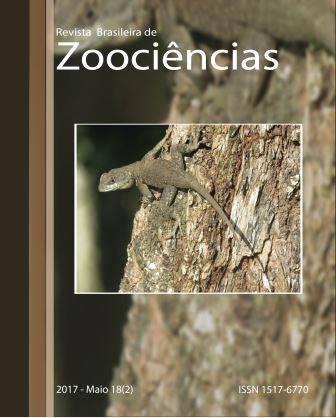Morphological and morphometric study of pre-ovigerous and post-ovigerous adults of Tanaisia (Paratanaisia) bragai (Santos, 1934) (Digenea, Eucotylidae)
DOI:
https://doi.org/10.34019/2596-3325.2017.v18.24667Resumo
The aim of this study was to obtain data on the morphology and morphometry of pre-ovigerous and post-ovigerous adults of the species Tanaisia (Paratanaisia) bragai, using confocal laser scanning microscopy to obtain tomographic images of the suckers and tegument. For morphometric analysis, 45 specimens (30 pre-ovigerous adults and 15 post-ovigerous adults) were measured with the aid of an ocular micrometer coupled to the objective of a photonic microscope. Pre-ovigerous and post-ovigerous adult individuals, stained with Mair carmalumen and mounted in permanent preparations, were analyzed by means of confocal laser scanning microscopy. Positive correlation was detected between the body length and ovary length of post-ovigerous adults (rs: 0.774; p<0.01), as well as between the body length and testes (rs: 0.604 and 0.659; p< 0.05), the body length and the length of uterus (rs: 0.839; p< 0,01) and between the ovary width and egg length (rs: 0.777; p<0.01). Morphological study of the pre-ovigerous adults demonstrated that the ovary and testes develop simultaneously before the development of the uterus and vitelline glands. The acetabulum was detected in pre-ovigerous adults stained with hematoxilin and observed using light microscopy. In these specimens, the acetabulum measured 36.7 ± 6.9 µm (25-50 µm) in width and 39.91 ± 6.8 µm (25-55 µm) in length. The acetabulum was not detected in post-ovigerous adults observed with light microscopy. However, this structure was detected using confocal miscrocopy. In the post-ovigerous specimens, the acetabulum presented a reduced size compared to the pre-ovigerous adults. This may imply that this structure has more functional significance in the larval and pre-ovigerous stages.



